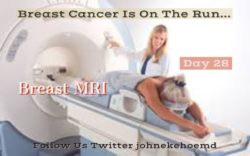
Breast Cancer on the Run in October: (Day 29) Stage 4 Breast Cancer as A Chronic Disease
Stage 4 breast cancer, metastatic breast cancer–these words terrify patients. And for good reason. Few people in the past survived the diagnosis for very long.

Stage 4 breast cancer, metastatic breast cancer–these words terrify patients. And for good reason. Few people in the past survived the diagnosis for very long.

Cancer is clever. A cancer cell will develop and then start to create its own blood supply to sustain itself. The vessels that it develops are generally immature and don’t regulate blood flow in and out of a structure in the same way as normal vessels.

THANK YOU. THAN YOU. THANK YOU, GOD. THANK YOU, DOCTOR. THANK GOD I DON’T HAVE TO DO CHEMOTHERAPY…. A decade ago there were few women who would echo these sentiments. Most women who were diagnosed with breast cancer ended up needing chemotherapy after surgery.

Reconstruction of the breast after mastectomy with a patient’s own tissue goes back a century. The first attempts were clumsy. One surgeon tried to put a giant lipoma in the defect. Others tried to make a breast out of muscle. Others attempted to bring part of the remaining breast over to the other side for restoration.

You want me to do a mastectomy as an ambulatory case? I asked incredulously when approached by a hospital administrator more than 15 years ago. They wanted me and other surgeons to do large breast operations and then send the patient home the same day?

Most breast cancer patients don’t see the pathologist or molecular researchers. They work in obscurity in back rooms evaluating cells or tissues from biopsies or surgical specimens. Or, they work in special research labs determining how cells function, how cancer develops. They look into microscopes rather than into a patient’s eyes.

Today the medical oncologist is presented with a smorgasbord of choices for their patients who are being considered for adjuvant chemotherapy. And patients are confronting an alphabet soup of acronyms to describe their regimens.

What does digital mammography have in common with NASA and the Hubble Spacecraft Program? Digital Mammography has been an important improvement in our imaging capability to find breast cancer. But the Hubble Space Program?

Close on the heels of the surgical community settling on a less aggressive and distorting breast operation for the treatment of breast cancer, a new development emerged in the surgical handling of lymph nodes in the axilla.

Slowly and painfully throughout the 1980s we came to believe that breast cancer could be treated without removing the breast and with no compromise in the likelihood of survival. Cancer care and cosmetic considerations could exist together, triumphantly.